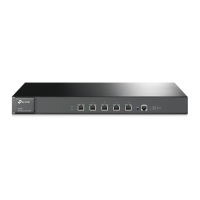
Do you have a question about the TP-Link AC50 and is the answer not in the manual?
| Ethernet LAN data rates | 10, 100 Mbit/s |
|---|---|
| Ethernet LAN (RJ-45) ports | 5 |
| Input voltage | 100 - 240 V |
| Input frequency | 50/60 Hz |
| VLAN support | Yes |
| Security algorithms | 802.1x RADIUS, SSID, WPA, WPA-PSK, WPA2, WPA2-PSK |
| Authentication method | MAC |
| Certification | CE, FCC, RoHS |
| Product color | Black |
| Cables included | AC |
| Compatible operating systems | Windows 10, Windows 8, Windows 7, Windows Vista, Windows XP, MAC OS, NetWare, UNIX, Linux |
| Storage temperature (T-T) | -40 - 70 °C |
| Operating temperature (T-T) | 0 - 40 °C |
| Storage relative humidity (H-H) | 5 - 90 % |
| Operating relative humidity (H-H) | 10 - 90 % |
| Flash memory | 16 MB |
| Internal memory | 128 MB |
| Processor frequency | 650 MHz |
| Control display unit | - |
| Internal memory type | DDR2 |
| Number of processors installed | 1 |
| Package type | Box |
| Package depth | 223 mm |
| Package width | 285 mm |
| Package height | 68 mm |
| Package weight | 1030 g |
| Harmonized System (HS) code | 85176990 |
| Depth | 126 mm |
|---|---|
| Width | 209 mm |
| Height | 26 mm |
Identifies the target audience for the guide, focusing on network managers.
Explains graphical and text conventions used throughout the document for clarity.
Provides links and resources for further support, documentation, and product information.
Guides users on how to map the network setup for AC and CAPs management.
Provides step-by-step instructions for accessing the Wireless Controller interface.
Displays device hardware, firmware, system time, and resource utilization (CPU/memory).
Shows information about connected wireless clients, allowing for operations like disconnect.
Provides details on connected Access Points (CAPs), including status, LEDs, and reboot options.
Lists clients' authentication status, enabling actions like deletion or search.
Allows creation and configuration of logical network interfaces, specifying VLANs.
Sets up the DHCP server to assign IP addresses and network parameters to CAPs and clients.
Configures Virtual Local Area Networks to segment network traffic and enhance security.
Manages switch port settings including statistics, mirroring, rate control, and general configuration.
Manages AP reboot schedules, locking APs to the AC, and creating AP groups.
Facilitates the process of upgrading firmware on connected Access Points.
Imports AP database files to identify and manage new AP models connected to the AC.
Optimizes client distribution across APs in high-density environments for better performance.
Configures radio settings for CAPs, including frequency, bandwidth, and transmit power.
Defines basic, supported, and multicast rates for different wireless standards (802.11a/b/g/n/ac).
Balances client load between 2.4GHz and 5GHz bands for improved network performance.
Manages Wi-Fi roaming settings (802.11k) to ensure seamless client connectivity between APs.
Creates and manages wireless networks (SSIDs) and configures security settings.
Controls network access based on MAC addresses and VLANs, using whitelist/blacklist.
Provides various portal authentication types like Web, Onekey, Voucher, SMS, Facebook, and Remote Portal.
Creates and manages local user accounts for web authentication purposes.
Handles the creation, distribution, and expiration of voucher codes for network access.
Configures external RADIUS servers for centralized authentication processes.
Manages authentication policies and parameters, including free access and aging.
Illustrates practical applications of authentication methods in real-world scenarios.
Sets up redundant network links for continuous operation and failover.
Explains scenarios and configuration for using two ACs for managing wireless networks together.
Manages administrator and operator accounts for device access and configuration.
Covers factory reset, backup/restore, reboot, and firmware upgrades.
Views interface traffic data, including rates, bytes, and packets transmitted/received.
Uses Ping and Traceroute tools to diagnose network connectivity issues and performance.
Configures the system time, either automatically via NTP or manually.
Accesses and filters system logs to monitor events, errors, and warnings.